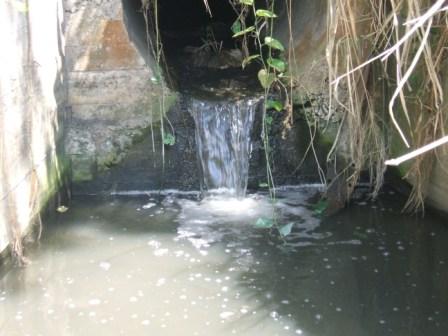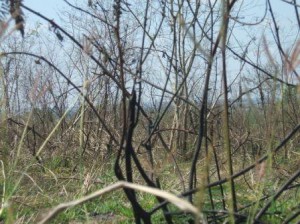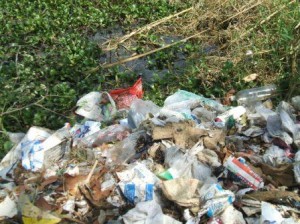Ecological Disaster Close to Home
By Erasmo Calzadilla

When I was boy in the Reparto Eléctrico -a neighborhood on the outskirts of Havana, and where I continue to live today- seemed like a veritable jungle. The concerts of frogs and crickets in the silence of the night made you feel far removed from all civilization.
The beetles, mosquitoes and termites came in waves, each one in a spate, and in the morning you had to sweep up piles of dead insects lying under the lights. I especially remember the torrential rains. In certain months of the year, kids would wait for the cloudbursts so that they could frolic in the showers, which arrived promptly each afternoon.
I remember that my grandfather was accustomed to strolling in the countryside that surrounded the neighborhood. While it was certainly not a true tropical forest, there was an abundance and great variety of trees.

There was even a waterfall, from which flowed a small creek of crystalline water. I used to dive in that brook with my friends to catch minnows, which I took home to raise in improvised fishbowls and jelly jars.
I’ve heard a great deal about ecological disasters, but until recently I hadn’t noticed how close such a calamity was to our neighborhood (though I’m not sure “disaster” is the appropriate word to describe the changes that are occurring there).
For example, it’s been a longtime since we’ve had those waves of insects or the mosquito nets that were so indispensable back then, and which now are rotting in some corner of the house. The humid forests that surrounded us are now dried scrubland, recurrently laid to waste by fire. What now reign in those areas are the thorny Marabu shrub tree and other very resistant species that come from Africa – adapted, I suppose, to the harsh conditions of that continent.

One day the brook was converted -without warning, and with the help of a bulldozer- into what is now a mire of putrid water. To my surprise, children still go there, at risk to their health, and catch fish that are very different from those my youth.
This is because the “waterhole” (as the artificial lagoon is called today) has become natural hatchery of fighting fish. This unusual species, as aggressive as beautiful, is caught by children to sell or to fight.
Likewise, cloudbursts have become so sporadic and squalid that the water levels of all area bodies of water have lowered, prompting people to pray for rainstorms to wash the dust away.

Is there some ecological authority in Cuba that is on top of these issues? Did the creators of the bog have to explain the ecological risks of their deeds to anyone? Is there some action plan aimed at halting desertification in these regions that have become arid in only a few short decades?
A while ago I went around to ask several officials and agencies in search of a reply, but I got few answers. I ended up throwing up my hands and given up for a good while, until I met with a group of people who are also concerned about these issues. They’ve renewed my energy. Up to now we’ve only been planting a few trees here and there, but we’re searching for support to do something a little more serious and far-reaching.






how strange that bizarre and alien life forms have taken over the landscape.
Almost like biological warfare!
Hmm, now how surprising would that be?
Fighting fish?! What the *hell*.